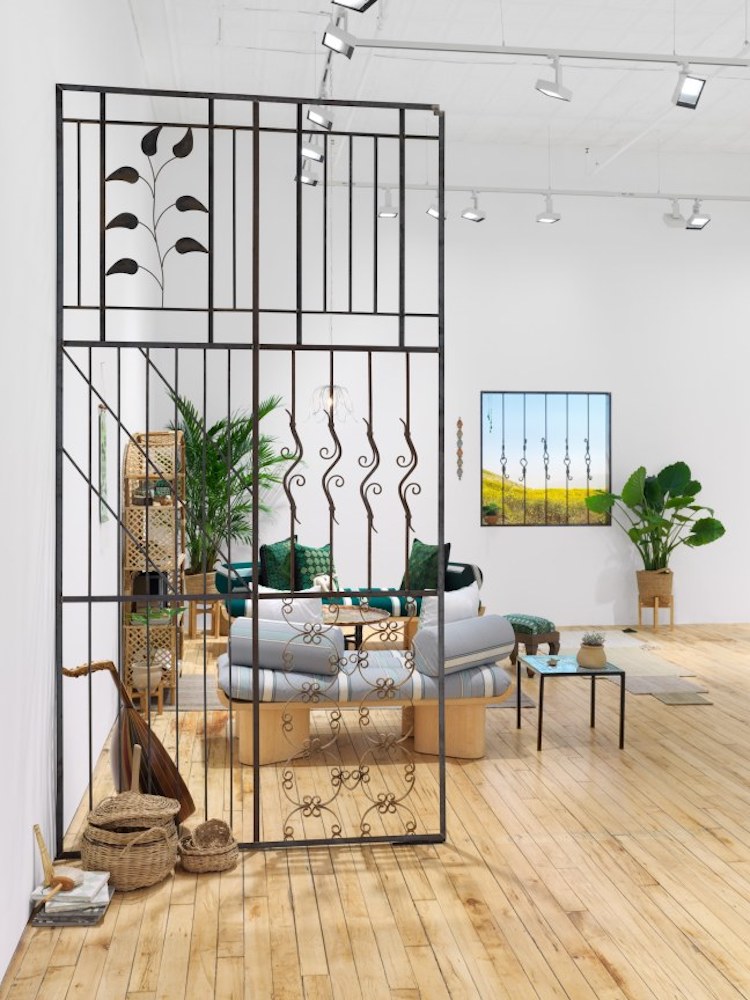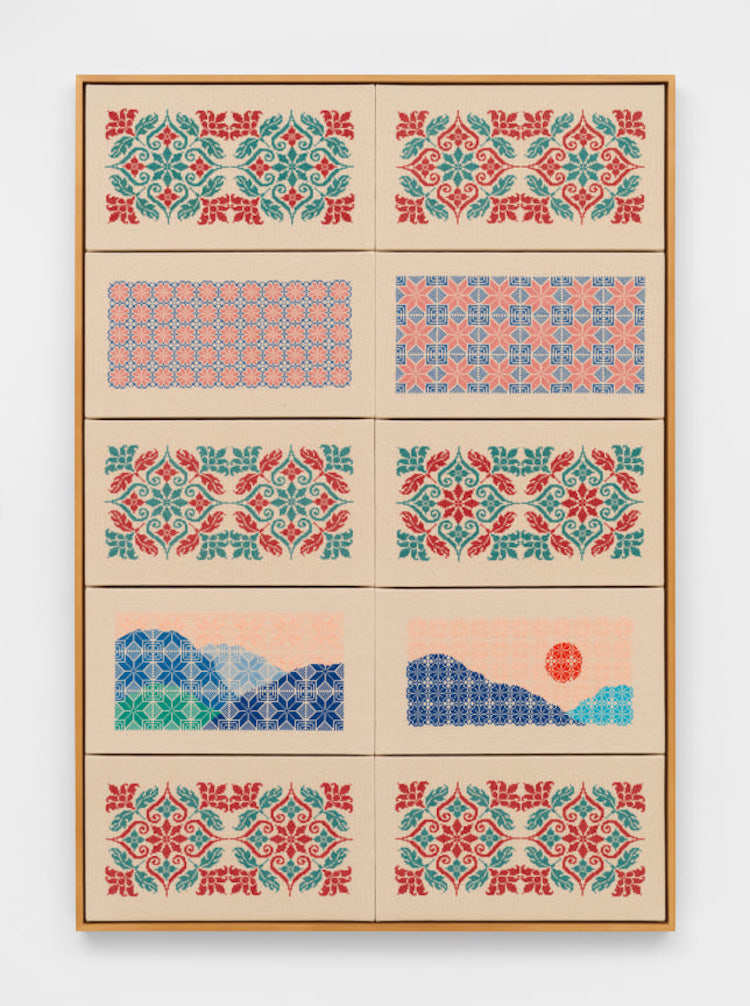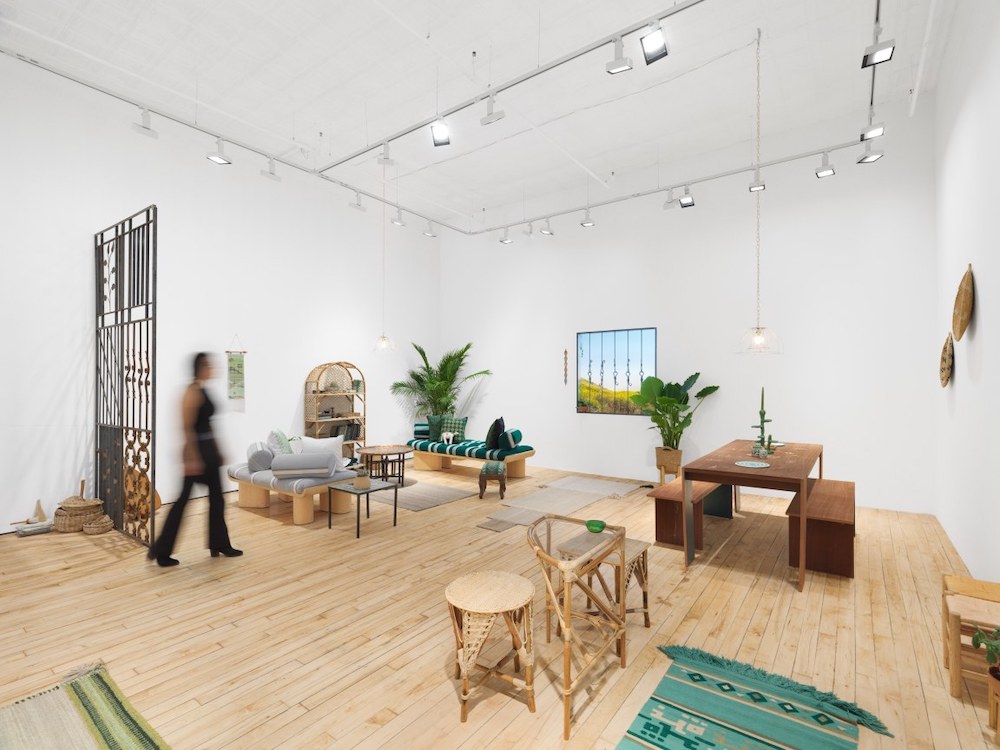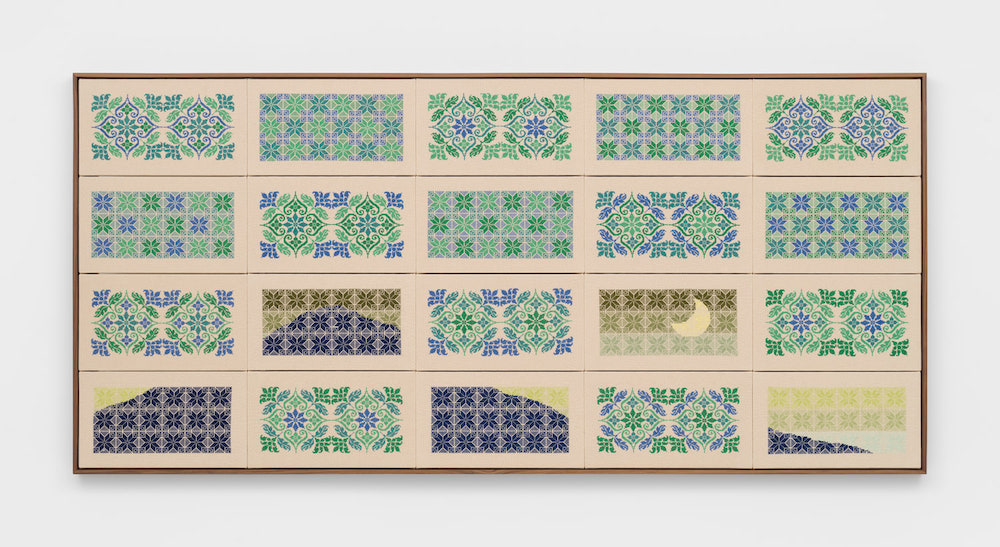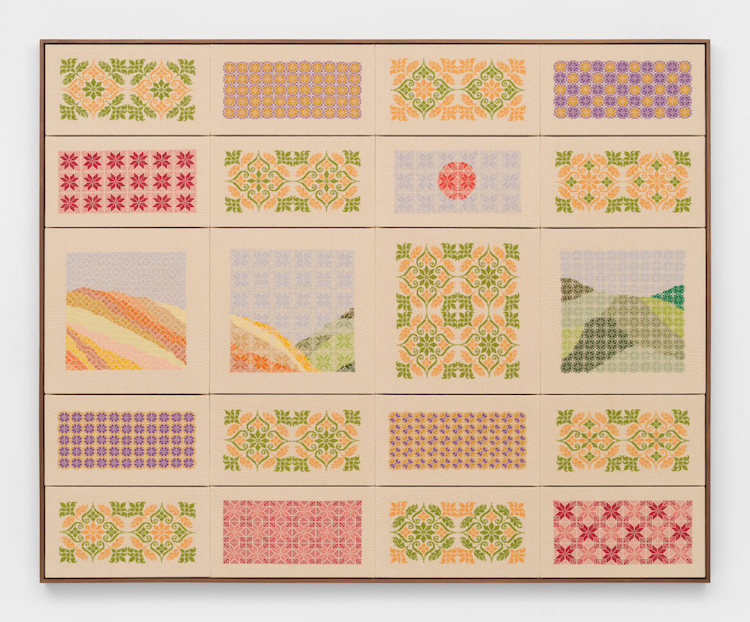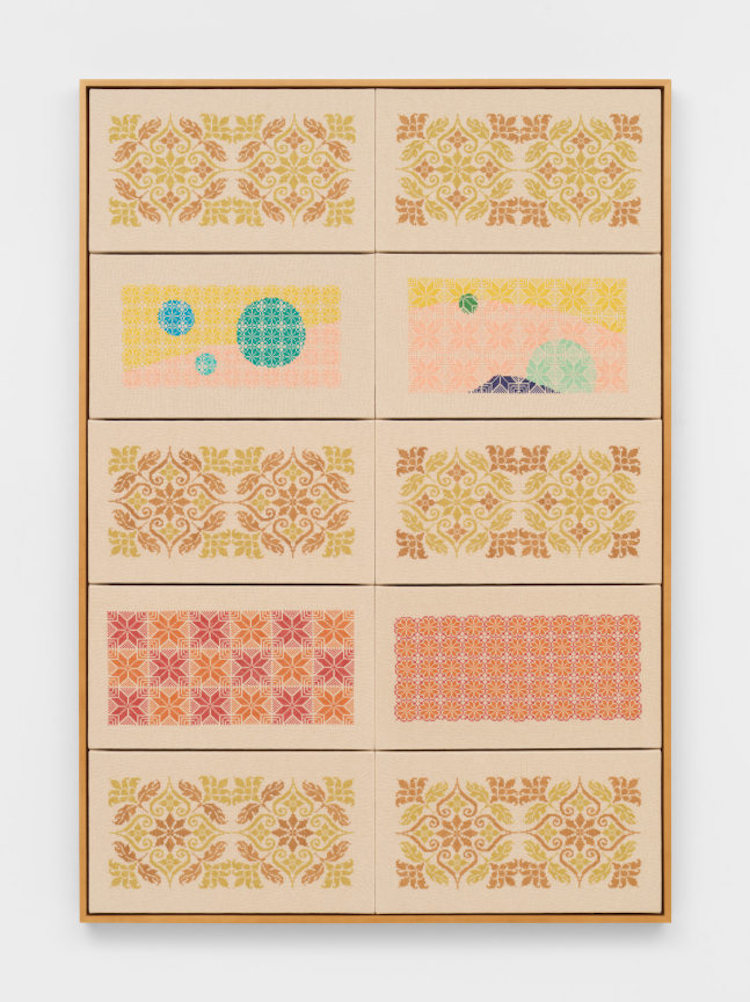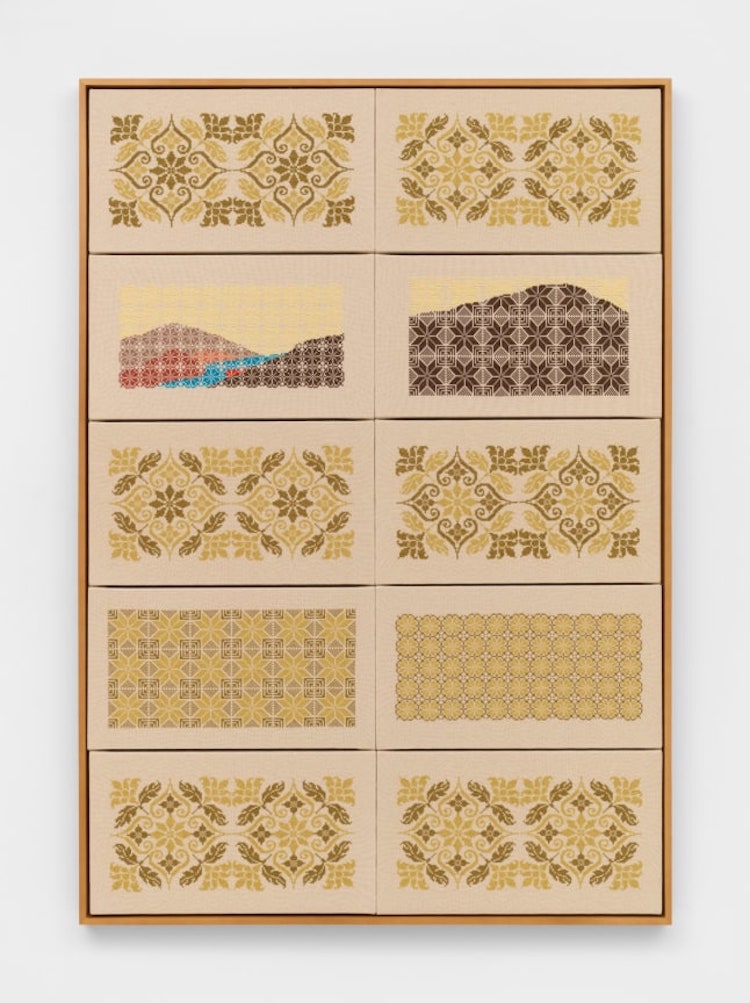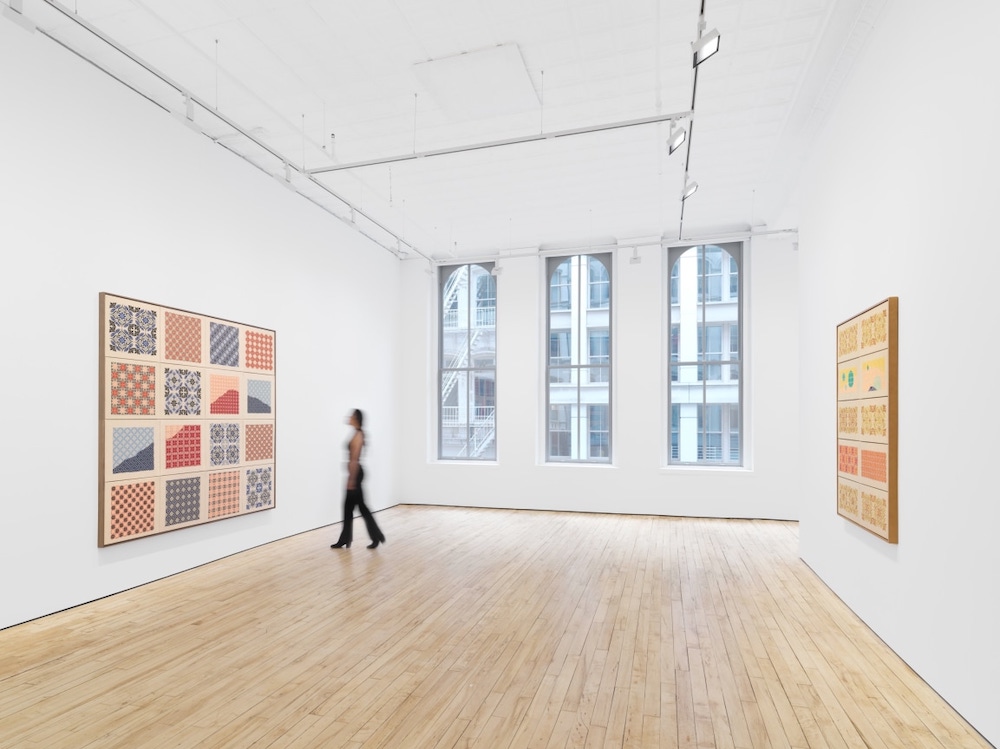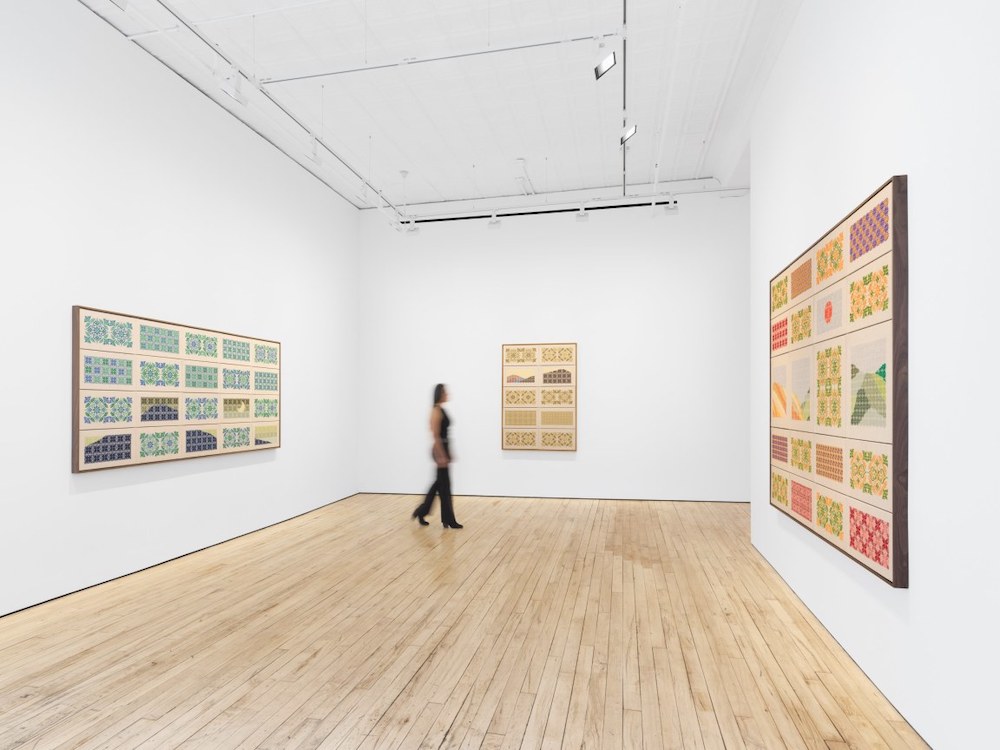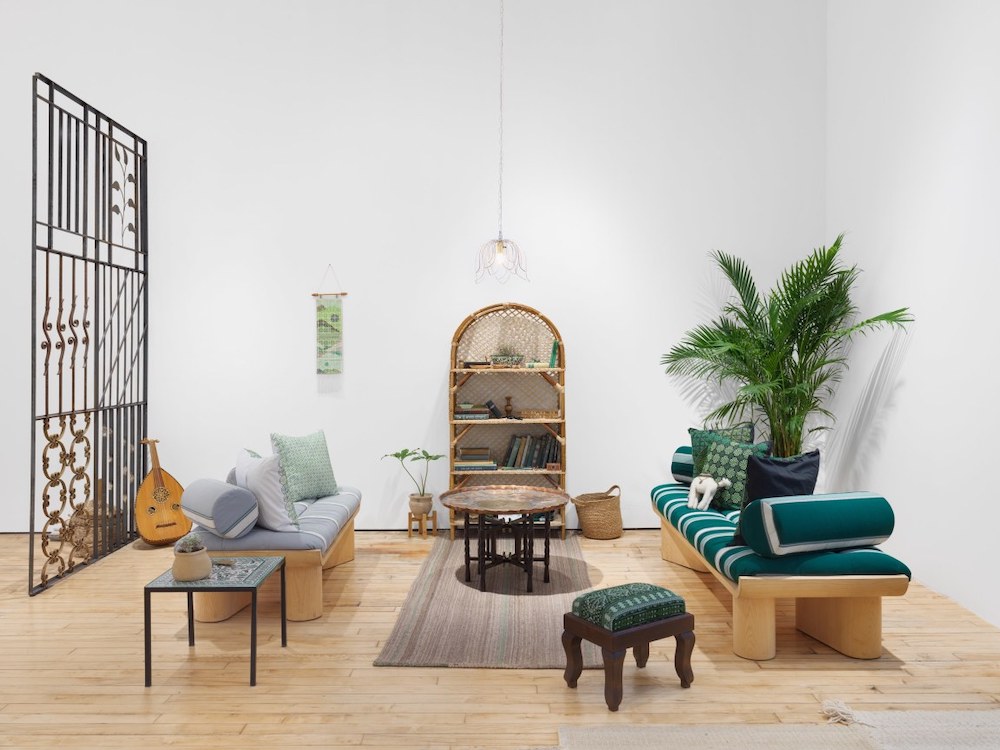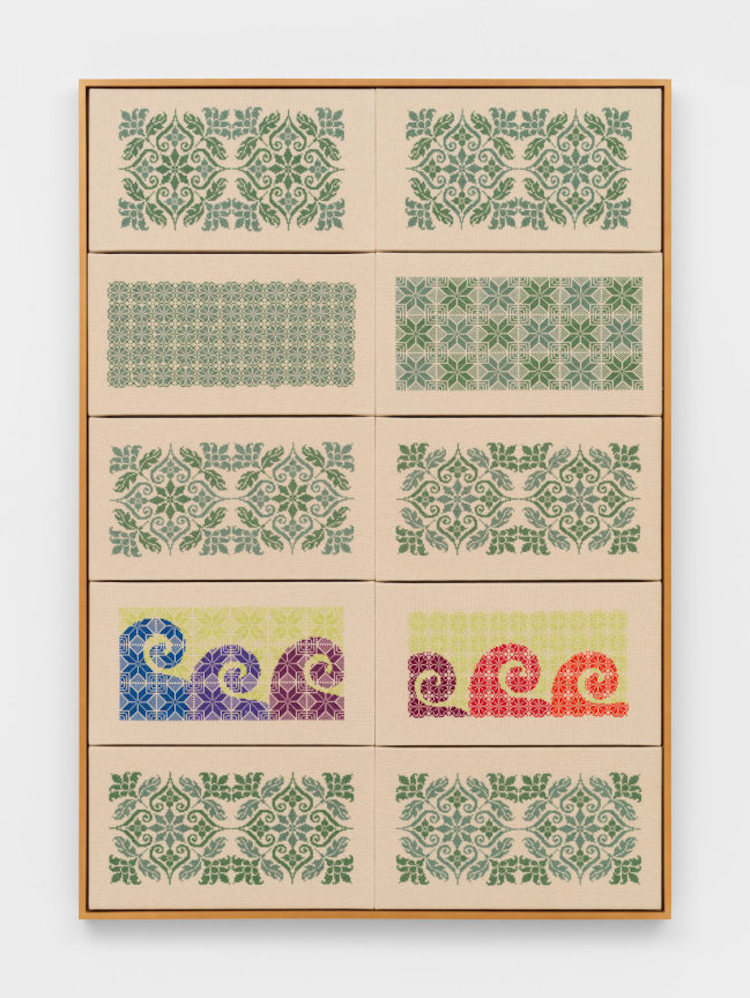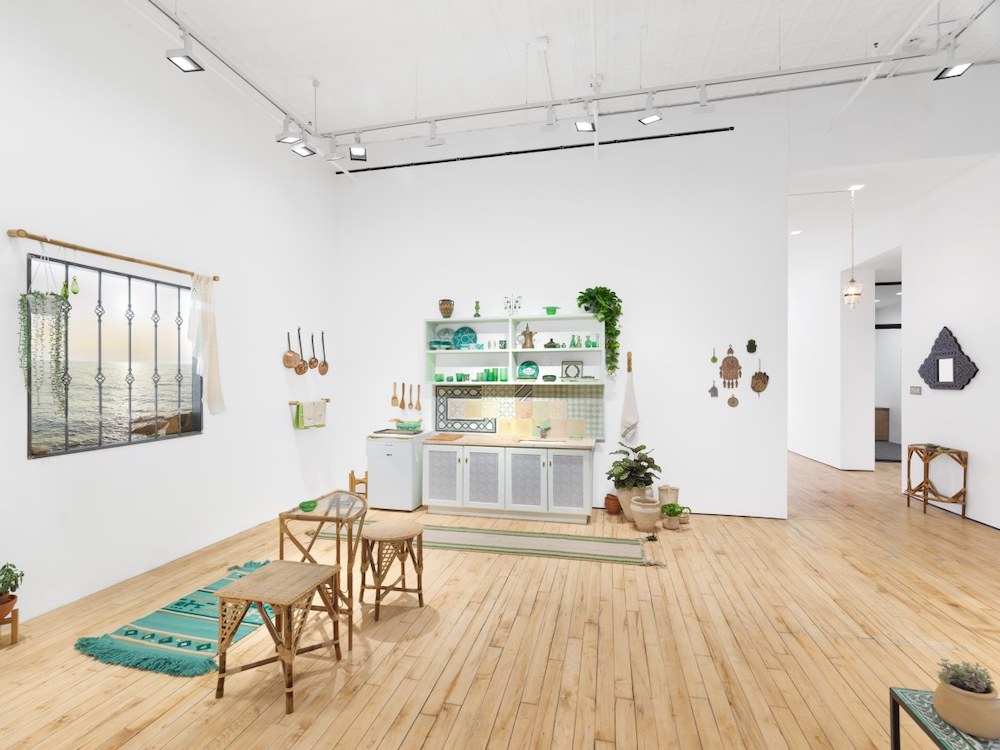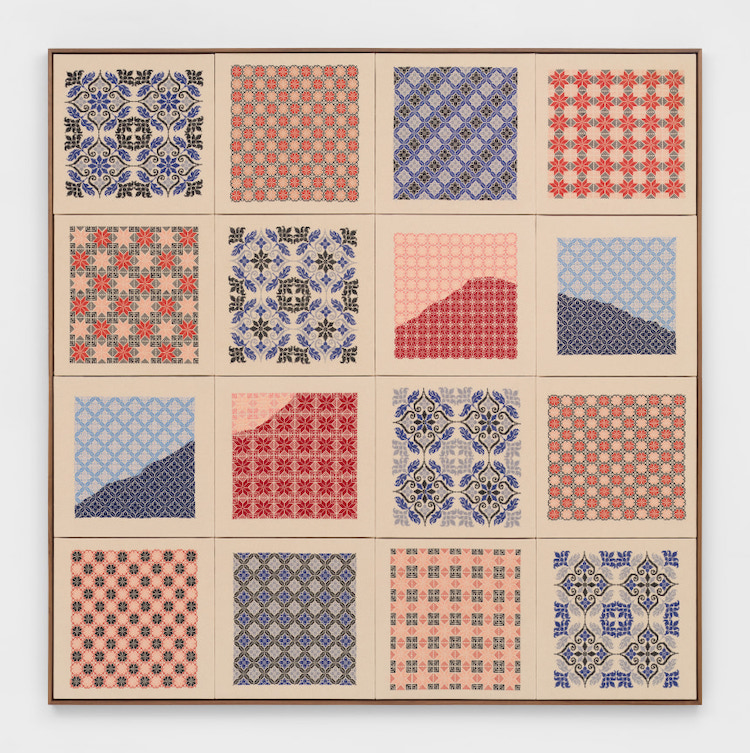James Cohan is pleased to present A Mountain Looms, an exhibition of seven new multipanel embroideries and the New York debut of Jordan Nassar’s expansive installation The Sea Beneath Our Eyes, on view through May 6 at 52 Walker Street. This is Nassar’s third solo exhibition with James Cohan.
A Mountain Looms raises questions of what lies ahead, suggesting that the mountain is an obstacle that must be overcome. Nassar depicts mountainscapes throughout his newest works, all within the framework of tatreez, traditional Palestinian embroidery. By rendering landscapes within patterns, he creates layers of perspective that recede or bring forward imagined vistas. In these embroideries, he pieces together panels of dense pattern as if they were tiles in a mosaic. He fits them together to create compositions that vibrate with color. The resulting, checkerboard-like works were created with the participation of Palestinian craftswomen living and working in Bethlehem, Ramallah, and Hebron. In the titular work A Mountain Looms, 2023, fields of intricately stitched red and blue patterns define and anchor alternating panels of rolling hills and expansive skies. All are embedded in floral, diamond and star motifs. In other works, like Flowers Whisper to the Wind, 2023, mountains are striated with undulating yellows, pinks, and green hues, lit by a glowing red sun. This re-envisioning of place is rooted in Nassar’s ongoing dialogue with diasporic longing and escalating global uncertainty through his multidisciplinary exploration of craft.
The second gallery houses an installation of the artist’s vision for his living quarters. Originally commissioned and produced by the Center for Contemporary Art Tel Aviv-Yafo, The Sea Beneath Our Eyes, 2019-ongoing, uses the crafts currently practiced across his ancestral region, as a lens to investigate questions of identity and cultural heritage in modern-day Israel-Palestine. Visitors are granted access to engage with an otherwise personal site, blurring the lines between private and public space. Nassar spent a year working with local craftspeople to commission every object, including Bedouin textiles woven in the Naqab desert, to glasswork made in Tel Aviv by Russians and in Hebron by Palestinians; metalwork made in Jaffa, to Palestinian woodwork made in Bethlehem; baskets made by Ethiopian immigrants, and ceramics made by Armenian potters in Jerusalem. The craftspeople were commissioned to create items as they traditionally do, and in their personal aesthetic styles, with slight tweaks suggested by the artist, such as incorporating green hues, among other prompts.
The Sea Beneath Our Eyes transports the viewer elsewhere, to a place that cannot be defined as one geo-location. Lightboxes function as windows that mimic the view of the Mediterranean Sea from Jaffa in one, and the rolling hills of Palestine in the other. These vistas are otherwise impossible to access at the same time in the same space. A wrought-metal decorative gate serves as an entry point from the exterior to the interior, and metal bars adorning the windows merge the indoors and the outdoors. A sensation of diasporic longing is imbued in each object, which serve as reminders of places through the manners and materials in which they are made, echoing traditions and decorative elements specific to various communities. The artist brings to light the desire to hold on to objects, to amass them and assign them meaning. As a whole, the work functions differently depending on where it is installed. On view for the first time in New York, the objects may feel different for this audience compared to its past iterations in Tel Aviv and the KMAC Museum in Louisville, Kentucky; and these varying degrees of associations are encouraged by the artist.



